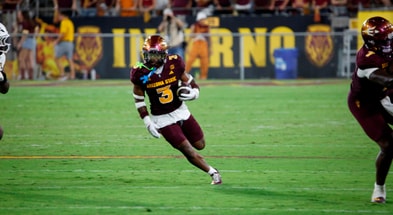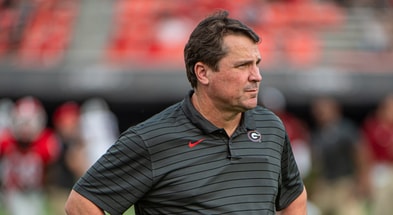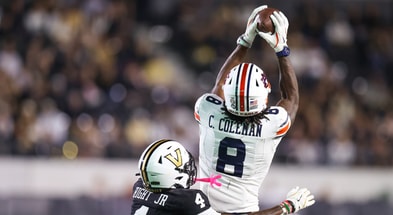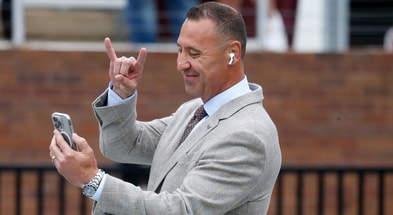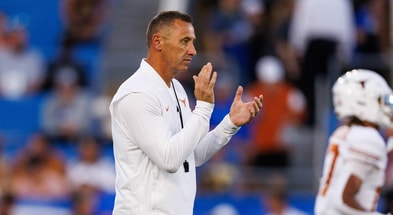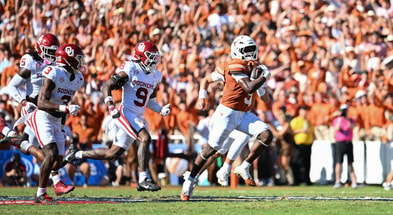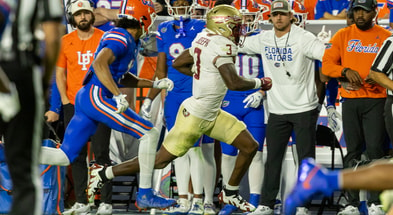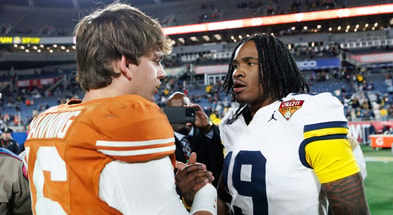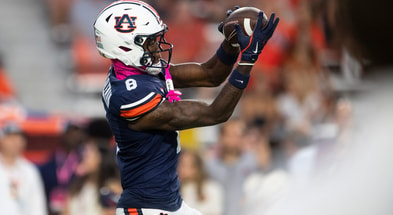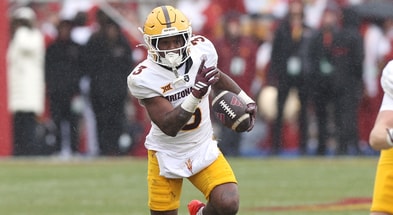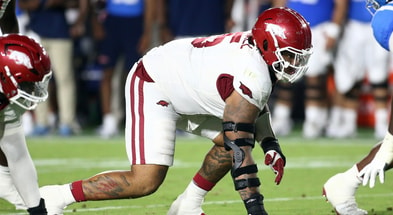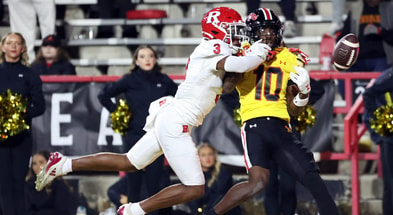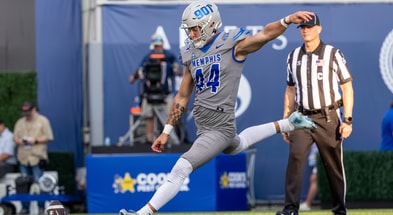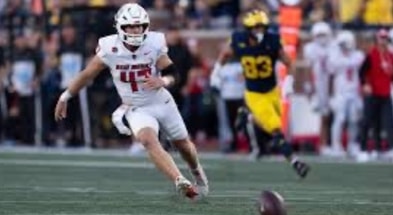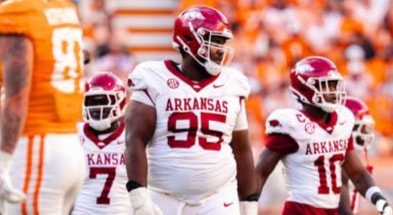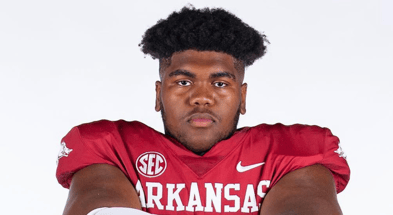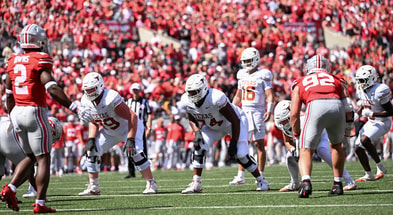Steve Sarkisian explains the learning curve associated with in-helmet communication devices
The NFL adopted coach-to-player in-helmet communication devices for offensive players in 1994. In 2008, the NFL allowed defensive players to have something similar in their helmets. In 2024, college football just might be following suit, and the Texas Longhorns are learning how to best utilize the technology.
[Sign up for Inside Texas and get ONE MONTH for $1 using our March Madness special!]
The NCAA Rules Committee announced a few weeks ago, among a number of rule change proposals, it was suggesting to the NCAA Playing Rules Oversight Panel the ability for FBS schools to have the option to use coach-to-player communications through the helmet to one player on the field. That player would be identified by having a green dot on the back midline of the player’s helmet, similar to in the NFL.
Per release, the communication from the coach to the player would be turned off with 15 seconds remaining on the play clock or when the ball is snapped, whichever comes first. The Playing Rules Oversight Panel is scheduled to give its opinion on the suggestions on April 18.
Because of the proposal, schools have been allowed to work with coach-to-player communication devices, something the Longhorns, head coach Steve Sarkisian, and quarterback Quinn Ewers did on Tuesday during Texas’ first 2024 spring practice.
“A little different for us, for Quinn and I this year, is my ability to talk to him through the mic,” Sarkisian said Tuesday. “We started practicing that today. Having two years of experience of working together and having that dialogue through the headset I think is going to be beneficial for us.”
The proposals come in the wake of the Michigan sign stealing scandal. Plus, any cost restrictions that may have made FBS schools balk at the technology in the past are hard to believe with the amount of money currently in the sport.
College football finally joining the 20th century does come with some adjusting, specifically for quarterbacks like Ewers.
“Just hearing it as opposed to the signals,” Sarkisian mentioned about the biggest learning curve. “I still think he’s going to look to the sideline, yet hearing that call and communicating that with the pertinent information that’s needed. I think the challenge for me is how much of information is quality, good information and when does it cross the threshold of too much to where it’s a little bit of paralysis by analysis?”
Top 10
- 1New
Kewan Lacy
Rebels RB decides on future
- 2Hot
Nebraska QB dominoes
Huskers line up multiple visits
- 3
Kenny Minchey
Flips transfer commitment
- 4Trending
Portal Predictions
Predicting transfer commitments
- 5
Bryce Underwood
Decides on Michigan future
Get the Daily On3 Newsletter in your inbox every morning
By clicking "Subscribe to Newsletter", I agree to On3's Privacy Notice, Terms, and use of my personal information described therein.
Within college football in the past decade or longer, even before the Connor Stalions imbroglio, schools have had to use elaborate posters, color coded clothing, and hand signals to communicate plays to the offense and the defense. The messaging was meant to make it difficult for opposing sidelines to decipher what the various gyrations meant. That was the case before Michigan allegedly operated a scheme that sent maize and blue affiliated onlookers to stadia around the country.
Would it allow teams to operate faster? Or would it slow the game down.
“I think you can do both quite frankly,” Sarkisian said. “It’s a lot easier to say five words than signal five words. Yet you can give more information and you can have some real dialogue to where you can speed up, slow down. Hopefully I can give him some information that allows him to play a little bit faster within plays as well.”
The proposal gives one defender the chance to have in-helmet comms as well. Sarkisian said the Longhorns were looking into whether they should give the device to a linebacker as a communicative link between the defensive front and the secondary or to a defensive back like the Star considering how often he is on the field.
Since it’s only a proposal at this juncture and technology has a bad habit of failing at the most inopportune times, Sarkisian and company aren’t going to completely abandon signaling.
“We want to teach the foundation of signaling because, God forbid the headset goes out in DKR for whatever reason, I’ve still got to get the play into our players,” Sarkisian said.
But if the NCAA passes the legislation in about a month, signaling may no longer be the anchor of a process it’s become for programs like Texas around FBS for the past 30 years.
